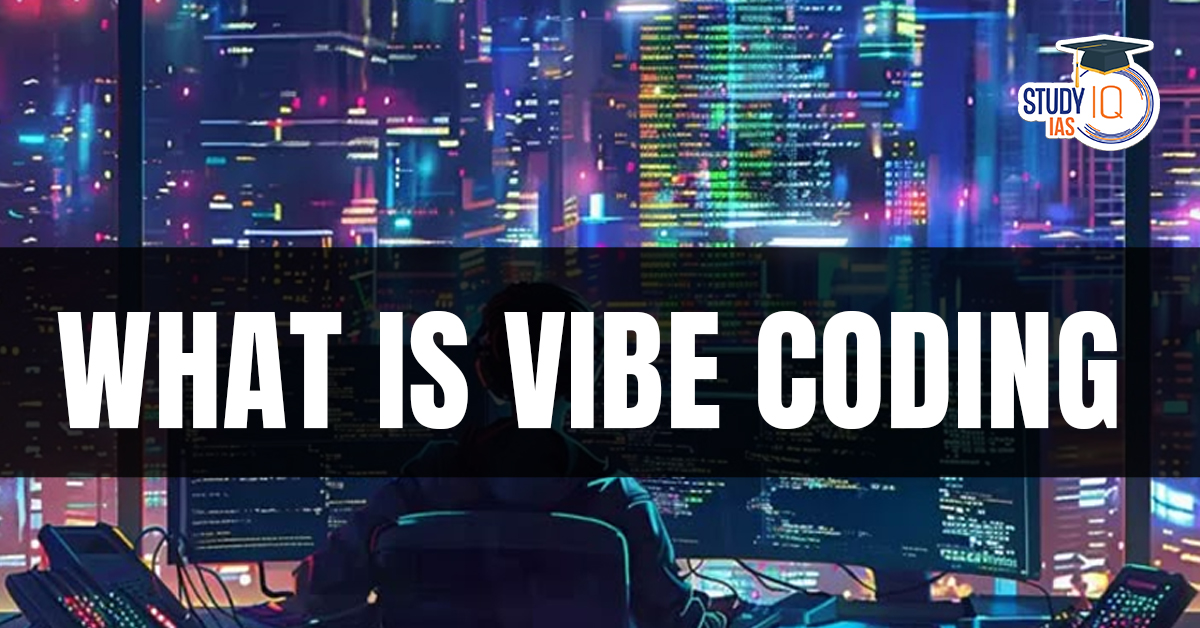Table of Contents
Vibe Coding is an emerging approach to programming where users rely entirely on Large Language Models (LLMs) to generate code without deeply engaging with its structure or technical details. This revolutionary method makes coding more accessible, allowing individuals with little to no experience to create functional programs effortlessly.
With AI models like ChatGPT, Bard, and Copilot, developers can describe their desired functionality in plain text, and the AI takes care of the rest. Vibe Coding is particularly beneficial for rapid prototyping, automating repetitive tasks, and even building full-fledged applications with minimal effort.
How Vibe Coding Works
Vibe Coding simplifies the programming process into a few key steps:
- Describe the Task – Users provide a simple text prompt explaining what they need.
- AI Generates the Code – The AI model interprets the prompt and produces the required code.
- Copy, Paste, and Execute – Users paste the generated code into their environment and run it without analyzing its underlying logic.
- Debugging via AI – If errors occur, users copy the error message and feed it back into the AI, which provides corrections or alternative solutions.
This approach eliminates the need for deep programming knowledge, allowing users to focus on results rather than the intricacies of coding.
Advantages of Vibe Coding
1. Accessibility for Non-Coders
Vibe Coding removes barriers to entry by enabling individuals without a technical background to create software. This democratization of coding empowers entrepreneurs, students, and creatives to bring their ideas to life.
2. Faster Development
By leveraging AI-generated code, developers can speed up the development process significantly. This is especially useful for prototyping, automating small tasks, and generating boilerplate code.
3. Effortless Debugging
Rather than manually troubleshooting errors, users can rely on AI assistance to fix issues in real time, making the debugging process smoother and more efficient.
4. Reduced Cognitive Load
Traditional programming requires an in-depth understanding of syntax, logic, and frameworks. Vibe Coding eliminates this burden, allowing users to focus on the end result rather than the process.
5. Boosts Productivity
By automating mundane coding tasks, developers can concentrate on high-level problem-solving and innovation rather than writing repetitive code.
Potential Drawbacks of Vibe Coding
While Vibe Coding offers numerous benefits, it also presents some challenges:
1. Lack of Deep Understanding
Since users don’t engage with the code’s underlying logic, they may struggle to modify or extend it beyond basic AI-generated outputs.
2. Security Risks
Blindly copying and executing AI-generated code may introduce vulnerabilities or unintended behaviors. Users should review outputs before deployment.
3. Over-Reliance on AI
Heavy dependence on AI for coding may reduce the development of traditional programming skills, making it harder to troubleshoot or optimize code independently.
4. Context Limitations
AI models may not always understand complex requirements or generate optimal code, requiring manual refinement for specific use cases.
Best Practices for Vibe Coding
To maximize the effectiveness of Vibe Coding while mitigating risks, users should follow these best practices:
- Refine Prompts: Provide clear, detailed descriptions to help AI generate better code.
- Review AI Outputs: Analyze the generated code for potential errors, security risks, and inefficiencies.
- Use AI for Learning: Rather than relying solely on AI, use generated code as a learning tool to understand programming concepts.
- Keep AI-Assisted Coding Ethical: Avoid using AI to generate malicious code, plagiarism, or unauthorized automation.
- Experiment and Iterate: Test different prompts and iterate on AI-generated solutions to achieve the best results.
The Future of Vibe Coding
As AI technology advances, Vibe Coding is expected to become even more sophisticated. Future improvements may include:
- Context-Aware AI Models – AI that understands user preferences and generates more personalized code.
- Better Debugging Features – AI-driven debugging tools that automatically detect and fix errors.
- Integration with No-Code Platforms – A seamless blend of Vibe Coding with visual development environments.
- AI-Powered Optimization – Code that not only functions correctly but is also optimized for performance and security.
Conclusion
Vibe Coding is reshaping how we approach programming by making it more intuitive, accessible, and efficient. While it may not completely replace traditional coding, it serves as a valuable tool for accelerating development and reducing technical barriers. As AI continues to evolve, Vibe Coding will play a crucial role in shaping the future of software development.


 UDAN Scheme, Objectives, Funding and Ach...
UDAN Scheme, Objectives, Funding and Ach...
 Indus Water Treaty 1960 Suspended by Ind...
Indus Water Treaty 1960 Suspended by Ind...
 5 Years of SVAMITVA Scheme and Its Benef...
5 Years of SVAMITVA Scheme and Its Benef...





















